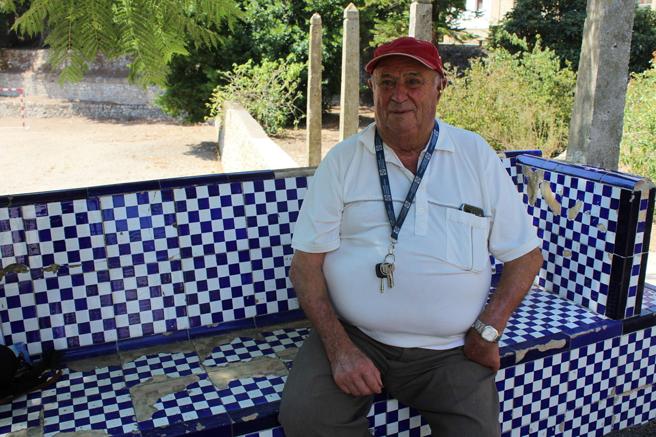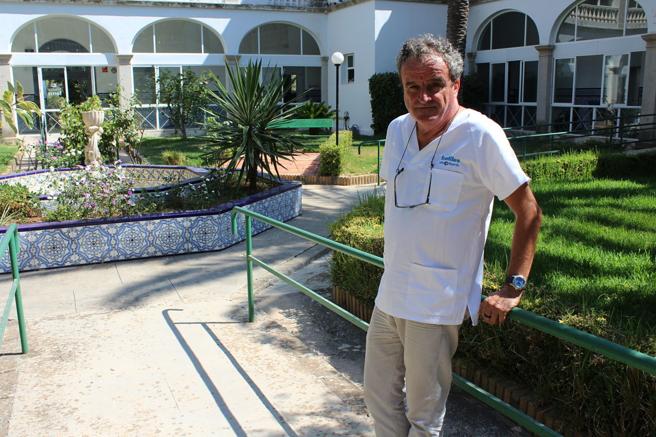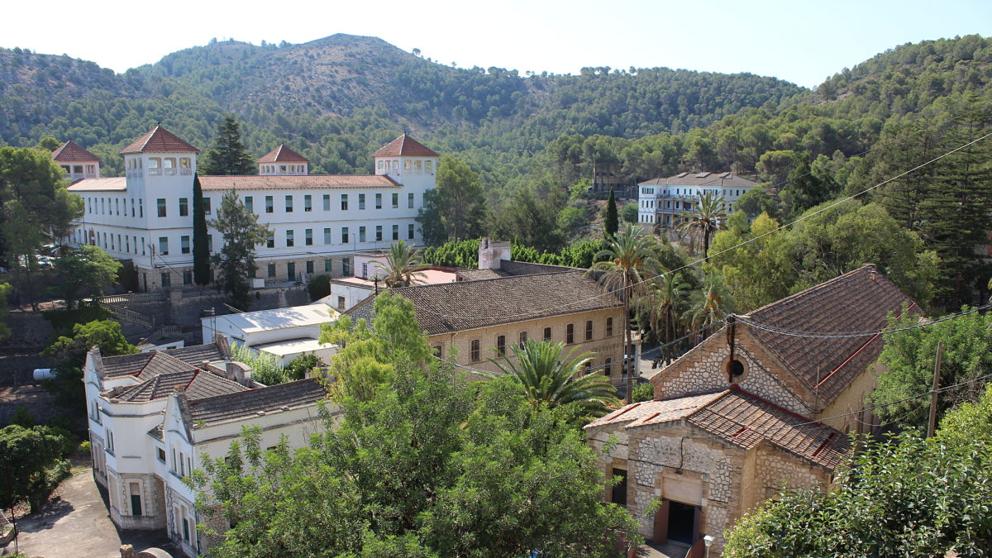In 2017, 8 new cases of leprosy were detected in Spain and 215,000 in the rest of the world. It also exists in Alicante, which accommodates the largest sanatorium in Europe and from where the staff fight against false myths.
The San Francisco de Borja Sanatorium is part of the non-profit association Fontilles. It is a complex of buildings that function as a geriatric and rehabilitation centre in Alicante, and it is also the national centre for leprosy care and research. It is set in one of the most beautiful parts of the Alicante Province: the municipality of Vall de Laguar, in the Marina Alta. This area is well known among mountaineers for its Barranc de l’Infern and the route known as “the trekking cathedral”.

Abilio, who lives in the centre, is 75 years old, but he seems a lot younger: his energy, joy and sense of humour keep him young. He is a simple and modest person, always ready to lend a hand where it is most needed.
He was diagnosed with leprosy at only 17 years of age at the Hospital Clínic de Barcelona in 1960. These were times when families abandoned small children, when information was scarce and the public based their knowledge of the disease on too many false myths. Today, seven decades later, misinformation has not improved. The general public still has little information of the disease and prefer to shut it away as though it doesn’t exist.
Leprosy is a disease that sounds old, most people basing their knowledge on the film Ben Hur (cinema has done a lot of damage). However, it still exists: it has not yet been eradicated in Spain, much less in the rest of the world. According to data from Fontilles, in 2017 eight new cases were detected in Spain: Madrid (2), País Vasco (2), Aragón (1), Catalunya (1), Galicia (1) and Navarra (1). In addition, there were 24 people receiving treatment across the Spanish territory. According to the World Health Organisation, however, it has been eradicated in Spain, which considers it to be the case when there is less than one case per 10,000 inhabitants.

in Fontilles there are currently 23 residents who have suffered the disease in the past. All are now “inactive” and are completely cured of leprosy although treatment to ensure there is no return continues. So why are they still in the center? Doctor José Ramón Gómez, the medical director of leprosy in Fontilles, says that it is because they have been “rejected by society and by their families” and they have made the place their home. “in their day here was no adequate medication” and here they are controlled.
Let’s go back to Abilio, who has a thousand stories to tell. He has lived in the Fontilles since the 50s. He refuses to say which period was better or worse, but he does recall that during the Franco regime, when there were about 700 people with leprosy, women and men slept in different buildings. It was forbidden to marry and it was actually illegal for them to have physical contact.
After five years in Fontilles, Abilio was completely healed, although he lost a good part sensitivity of his skin. He was able to return to his native town, Vinaròs where he worked as a delivery driver in the and married. He never spoke of leprosy to avoid rejection: “Some members of my family did not know but now I talk about it all the time, I do not have taboos. In fact, he currently boasts of the large number of friends he has on Facebook.
He told his wife, a German tourist, of the disease on “the first day” they met, but she did not care, and they were married for 43 years. They had a son and then a grandchild. “Both healthy,” he stresses.
He didn’t return to Fontilles for over 40 years because “he was fine and normal”, but two years ago his wife died and so as not to be alone, he decided that he would be better off if he returned to the sanatorium that gave him a new life. “What could I do if I had remained in my village? It scares me, “he says.
At Fontilles he feels at home, he helps others and he can assist them with their specialised cures: “Here I am comfortable and here I will stay … if they do not throw me out!”. “I do not have to provide any explanations, they know that I’m sick but here I am protected. This disease keeps you very remote from people, it’s a very reserved disease because it’s scary to talk about it, “he says.
“But this is paradise for me: there could be nowhere better for me to live than here, no matter how good it is. You are free, you go out when you want, you go to sleep and you get up when you want, if you do not like your food you go to a restaurant … What could be better than that? “.
What he likes least about the current sanatorium is that “there are a lot of older people and only a few young people.” As it is time for us to leave he says goodbye with a smile and a firm handshake. “Come back another day and we will talk again when you have more time!” He says.





